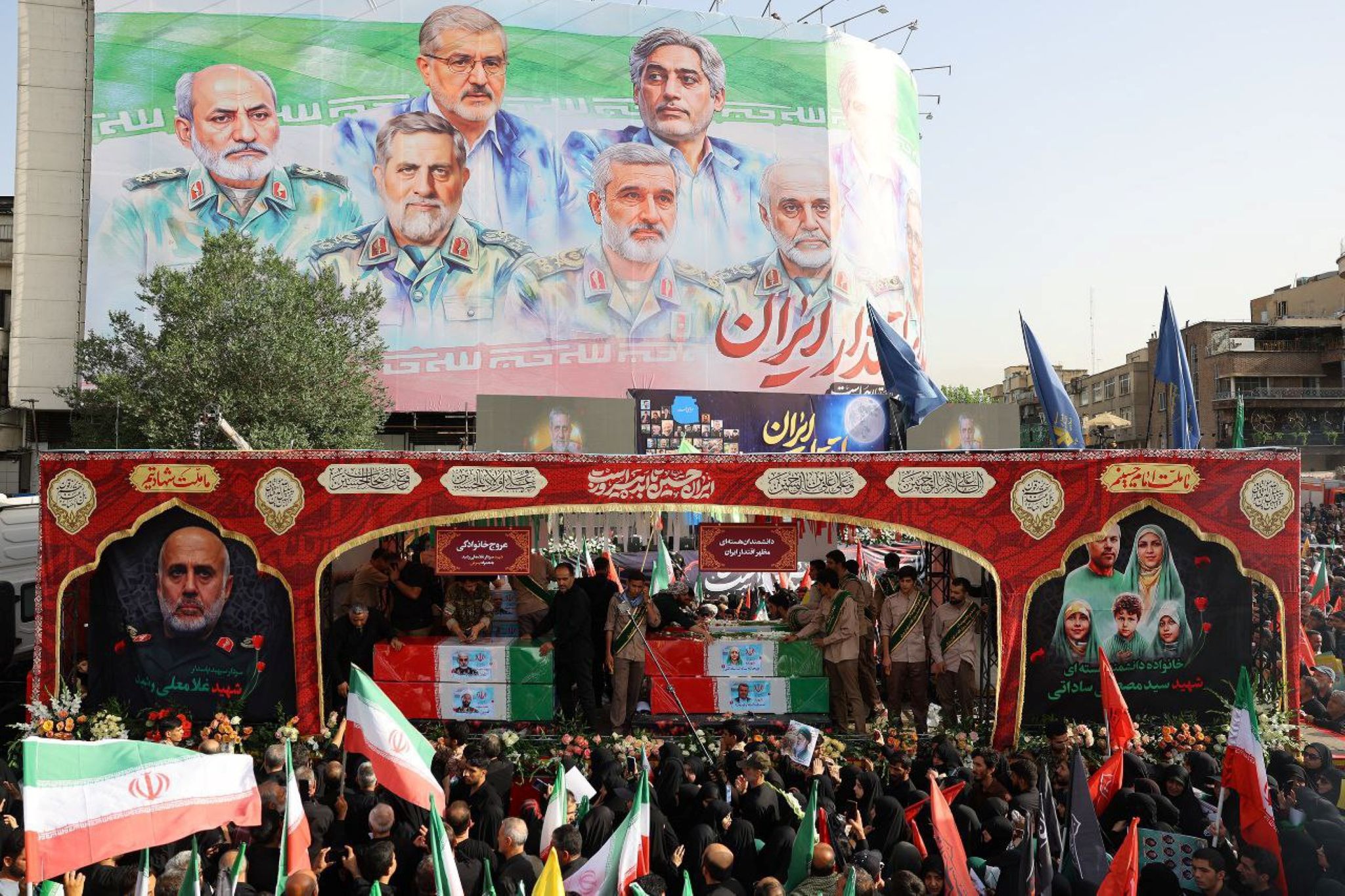On Saturday June 28th, hundreds of thousands of Iranians filled the streets of Tehran to mourn the victims of Israel's 12-day, U.S.-backed assault on Iran. Graduates from Sharif University of Technology, the top science and engineering university in Iran, wore caps and gowns to salute the coffins of assassinated scientists. A band performed a symphony around the Azadi Tower. The mood of the mass funeral procession was one of mourning and defiance.
In the days between Israel’s initial attack on Tehran and the ceasefire established on June 24, the Zionist entity carried out airstrikes on over 200 locations in the city, destroying more than 120 residences and critically damaging 500 more. During the initial rush to evacuate, traffic slowed to a crawl. Intensified by fears of supply shortage due to Israeli attacks on oil infrastructure, gas lines stretched around city blocks, as residents scrambled to stock up for long journeys out of town. Internet access was in near blackout. The lack of air raid sirens and gaps in emergency broadcasting abilities amplified the uncertainty for millions of Iranians.
Yet in the face of a “shock and awe” campaign by Israel, the resilience of the Iranian people remains unshakable. Zionist aggression has united Iranians in support of Iran’s economic and military independence. The U.S. used its most powerful weapons — short of nuclear bombs — and still failed to achieve its objectives, while the Iranian military responded to Israel in kind, with missiles that pierced both its Iron Dome and the myth of its invincibility.
Collective attempts to find humor in wartime suffused WhatsApp chats and social media sites. Viral videos portray stereotypical Iranian nonchalance — a man calmly drinks tea amidst the rubble of his home; two brothers trade off urging the other to evacuate. Memes help dissipate the frustration of finding accurate information and the anxiety of packing to leave. Even Iran’s state media participated, after it returned fire to Tel Aviv. Mocking the entity’s fantastical visualizations of Hamas tunnels underneath Gaza’s hospitals, it produced a video showing F-35 planes, a rocket launcher, and even a submarine stored in a Tel Aviv residential tower block.
But it was the actions of everyday people on the ground that demonstrated their resilience best. Cooperation and solidarity mutual aid networks sprung up across the country in the wake of the blasts. Hotels in Tehran and other cities opened their doors to the displaced, part of a nationwide campaign to provide emergency housing. Taxi drivers and private cars volunteered to transport the stranded to safer provinces. Residents of northern cities offered refuge to those fleeing, while volunteers delivered groceries and essentials to those who remained. Strangers shared tips and knowledge as much as resources. Iranians in Tehran and smaller cities helped firefighters clean up rubble and repair damaged sites. Ordinary people filled the gaps in overwhelmed official services, taking on roles as medics and rescuers. And networks of community defense have risen to ferret out Mossad infiltrators.
These communal efforts helped soften the grief and uncertainty of millions, afraid for their lives, homes, and loved ones in the face of U.S. and Israeli bombing. Banding together and rallying behind the armed forces and the government, Iranians at home and abroad have recommitted to their love for their homeland and refused to turn their back on their countrymen. The result of this latest phase of imperialist aggression might be a resurgence of Iranian national identity not seen since the U.S. war on Iraq. As an elderly man interviewed by state media said, “We will eat the soil before we give up our lands.”


